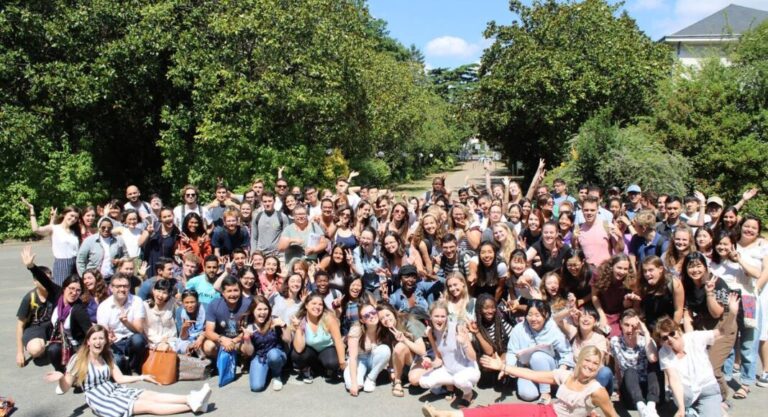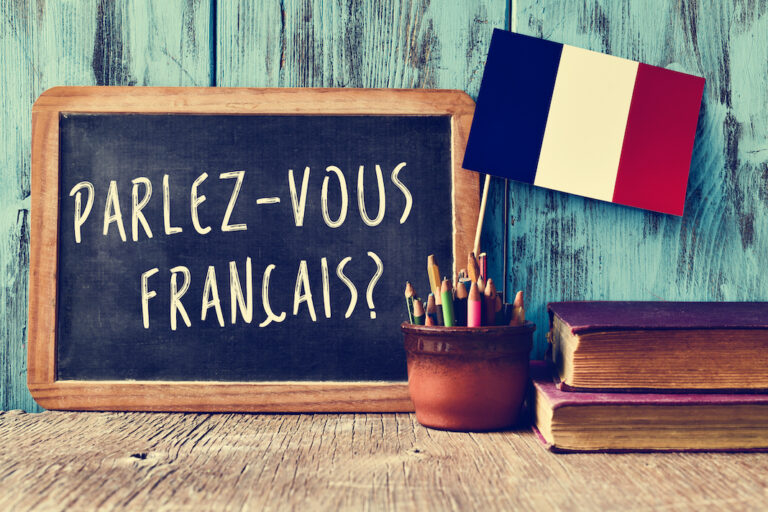While many Americans drop the occasional French term to sound fancy, it’s important to proceed with caution. The connotations of these terms may seem fancy, but to remain loyal to the original French, we need to refocus on the actual definitions. This is especially important so as to avoid embarrassing misuses when you could be corrected by a hidden Francophone in your presence, whether it be at a cocktail party or your next big presentation. De facto definitions be gone, here are the real French uses of commonly used French phrases in English.
1. Bonne chance!
American usage: A way to convey good luck to someone embarking on a difficult or new endeavor.
How it’s really used: While bonne chance literally means “good luck,” the French prefer saying “bon courage” for taking on new tasks. If you think about it, it feels a lot better to have courage wished upon you than simply letting the chips fall where they may with a “good luck.”
2. À la mode
American usage: To describe ice cream on top of any variety of deserts.
How it’s really used: To describe something trendy or fashionable, referring to style. À la mode is much closer to “in style” than anything having to do with sweets, unless those are causing a brouhaha during fashion week.
3. Enfant terrible
American usage: To describe an incorrigible child or general misbehavior of a young person.
How it’s really used: In modern French, “terrible” actually has a positive connotation. Taken from African literature, enfant terrible describes a kind of transgression in a character who can turn society powerless, either in the character’s innovation or destructive nature. (To be fair, some in the art world actually get this right.)
4. Chef
American usage: Someone who cooks food.
How it’s really used: A “chef” in French is simply the head of any business entity or organization where there is a hierarchy of employees. So, whomever you report to at the top you would simply refer to as “le chef.” This can include a cook (it’s the chef de cuisine), but its use is far broader in the French language.
5. Château
American usage: A castle by most conventional standards, (i.e., a moat, spires, and other Disney or Game of Thrones-esque characteristics).
How it’s really used: Château can apply to a wide variety of housing structures in French, including country estates, wineries, or in reference to larger homes for nobility. The English connotation lies more closely in château fort, which is the kind of castle fairytales have instilled in us from a young age. There are also hôtels and palais, which refer to mansion-type buildings in a city. A hôtel is different in this respect from an English hotel in that their lineage goes back to a specific architectural design featuring a courtyard where the nobility would live. Classic examples of these in Paris are the Place des Vosges and the Picasso Museum.
6. Cause célèbre
American usage: A controversial or intense issue championed by someone that receives far reaching public debate.
How it’s really used: While both of these words are indeed French and translate to “famous cause,” cause célèbre is not used in common French as much as its American counterpart. A French person wouldn’t bat an eye at the use of the term with its correct pronunciation, but its use cuts to a broader point about the use of French by Americans and Anglophones more broadly: it’s simply used to sound fancy. The only real reason to use this term in English is because it has a weighty connotation in the perceived grandeur of the French language and the education necessary for the speaker to supposedly understand what it means.
7. Au naturel
American usage: To be naked or not wearing makeup.
How it’s really used: The French drop the au and use naturel much more frequently in the realm of food to indicate a natural and uncontaminated way to prepare something. This has begun to go hand-in-hand with the more recent advent of the term bio, the French word for “organic.”






